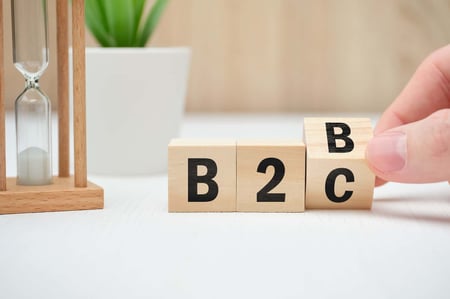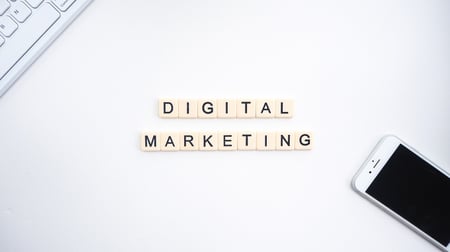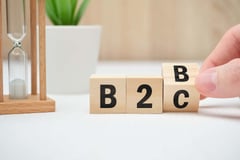Index Content
B2C marketing is a type of marketing where actions are always directed at the end consumer. In general, sales in this market are lower value and more impulsive, and the consumer does not attach so much importance to the objective characteristics of the product, but rather to what it brings to his or her life.
Metrics for B2C
In order to measure the success of B2C marketing campaigns you need to take into account 4 key metrics to understand if a plan is working:
- Conversion Ratio: This metric measures how many of your website visitors have ultimately converted into customers.
- Steps to conversion: If you want to improve your revenue, you will need to know the path that leads your visitors to become customers, i.e. what are the steps that these visitors follow until they make a decision. It is essential to know this path to establish how you can facilitate this process.
- Acquisition cost: It is important to know how much we invest, as the lower the amount, the higher the profit margin.
- Brand awareness: This is the most complicated metric to measure, but you can keep it under control by monitoring data such as Google searches, visits to your website, mentions on social networks, opinion sites, Google Alerts, etc.

what are the advantages of Business to Costumer?
-Shopping is very fast.
-Offers and prices are always up to date.
-Customer service centres are located on the web.
-Possibility to find more information about products.
-Remote shopping.
-Market expansion regardless of geographical location.
-More economical.
-More users and more customers.
-More control.
-More publicity.
- Greater loyalty.
how is it different from B2B?
B2C differs mainly from B2B marketing in that, instead of thinking about the objective function of a product, it appeals to emotion and feelings with the intention of creating a need in the individual buyer. It also focuses on advertising, creating valuable content in various formats and designing campaigns across multiple channels.
On the other hand, B2B focuses on long-term relationships and personalised offers to buyer personas to reinforce the focus on the professional buyer, and B2B customer problems tend to be more complex and time-consuming to solve than B2C, often requiring consultation between multiple people and departments to provide the best solution for a B2B customer.
How to engage customers with a well thought-out B2C plan
- define your objectives and focus on achieving them. Business people forget their main objectives, which in many cases results in failure. When you have clear objectives, it is easier to focus on their realisation and the results you want to achieve.
- get to know your customers and their needs. It is essential to know your customers' needs in order to create the most personalised strategies. If you don't know what your customers want, it is unlikely that you will offer them the right solution. Keep in mind that your messages to each of your customers need to be unique and individual to get the best results.
- create aworkflow for your users. Creating a workflow means creating a path that includes all the steps that users must complete to get to the end. One of the most common examples is when a user subscribes to your newsletter and you automatically send him/her an email with information that you think will be useful to him/her. This way, the communication between you will continue, and the user will be more likely to become a buyer.
- make sure that each lead has a different value. You should keep in mind these two terms: lead scoring and lead nurturing. Lead scoring refers to the segmentation of your database using metrics defined in your strategies and lead nurturing is the phase that consists of identifying in which stage of the funnel your leads are and thinking about the steps to take to accompany them towards conversion.
- don't forget to maintain the database. Many companies forget about the last phase of the funnel, which consists of maintaining the database. In addition to focusing on increasing it, which is beneficial for your business, it is also essential to identify inactive leads. In this way, you will avoid sending emails to users who are not interested.

We hope that now that you know what B2C is and other interesting facts about how to use it in Inbound Marketing to attract customers with it, you start to apply it and get leads and loyal buyers. As we have mentioned, one of the main advantages that B2C gives us is loyalty and that communication is personalised and focused on meeting the needs of the consumer. So if the brand convinces the customer, he/she will be loyal to it.





